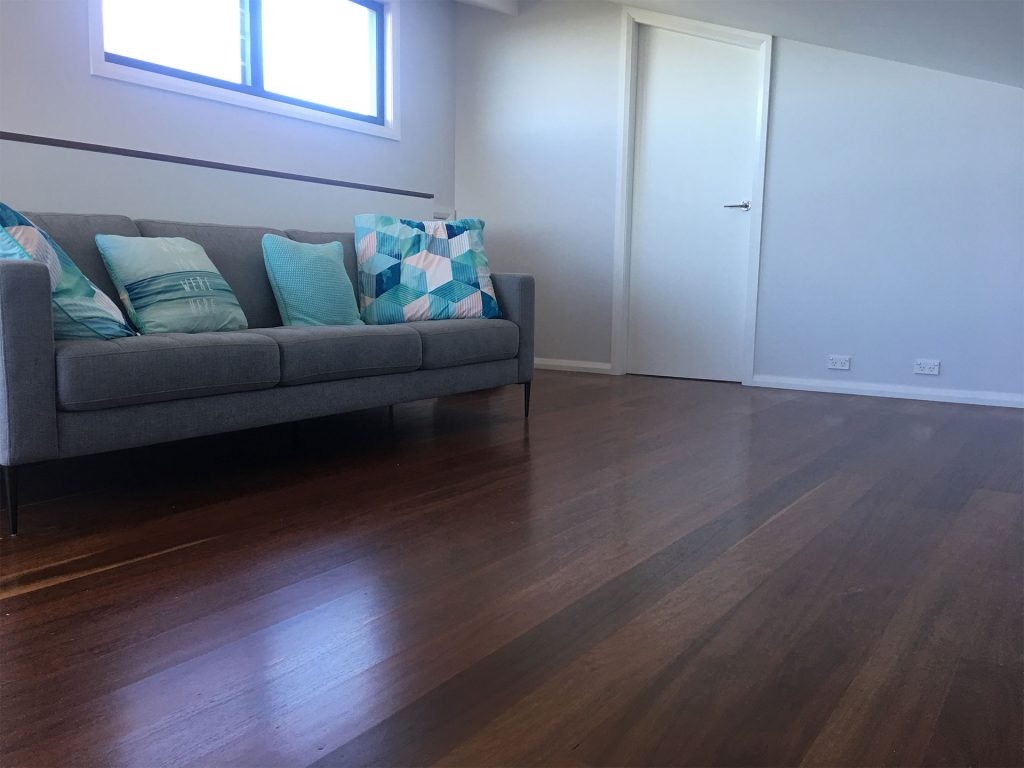How to Heat Timber or Wooden floors
Heating under a wooden floor is becoming a popular option for many homes located in colder climate zones. As the heat source is the timber floor itself, warmth will naturally rise throughout the room to provide a comfortable and cosy environment for the whole family to enjoy.
Installation Options
Due to the placement of the floor heating wires, top nailed or secret nailed floorboards can`t be used. However, floating floors and lino type floor coverings are perfect for under floor heating. There are a few different installation methods and types of products that can potentially be used for heating timber floors. The choice of which system to use can often depend on what kind of subfloor you have. Here are a few examples.

Concrete Subfloors
A concrete floor located under the timber floor can act as a great base for floor heating installation, as concrete and cement act as a storage mass and good conductor for the heat produced. There are a few options for this one.
Installing Heating In Concrete Slab Subfloors
If a new slab is to be poured, installing heating cables within the concrete is a great option. The warmth will then radiate through the slab to the timber floor above. If the timber floor is installed on batons, it is advisable not to nail them into the slab as this could damage the heating system. Gluing the battens to the slab in this situation could be a great way to go.
Alternatively, if a floating floor is to be installed without batons, it will be in direct contact with the heated slab beneath, allowing a good temperature transfer between the slab and the flooring above.
Installing Heating On Concrete Slab Subfloors
If your slab has already been poured, it is possible to lay the floor heating on top of the slab. A thin “topping” of self leveller (polymer modified concrete) is then poured. This cements the heating wires to the slab, providing a medium to transfer the warmth through to the timber floor above. It`s a great option for installation as the heat source is located just beneath the flooring.
Foil Heating Option
I hear you ask “what is the difference between foil heating and under tile /under screed floor heating?” Great question!
Foil heating is a thinner cable woven into a foil mat. This allows for installation under carpet and floating timber floors. The foil aids to transfer the warmth between the heating wires and through to the flooring. Under screed/ under tile cable is installed in cement, concrete or tile glue and is generally the preferred method, however foil heating is becoming more and more popular due to its reduced cost of installation. When the foil product is installed, it requires an overlay to be placed on top to protect it from friction between the heating and the floating floor.
Installing Floor Heating On Joists
When installing floor heating on timber joists, there are 2 options to consider. The best method is to instal compressed cement based sheets or tile underlay on the joists followed by the heating. A thin screed or self leveller (ardit) can be applied over the top. This is the preferred option as the self leveller is a great heat conductor, and has excellent storage properties. Another option is to fix yellow tongue flooring to the joists, then place down a special underlay board. Foil heating can then be installed, followed by an overlay board. The overlay board protects the floating floor from rubbing on the heating wires contained within the foil. The floating floor can then be installed.
Talk to us!
If you have any questions, we would love to chat with you about your project.
